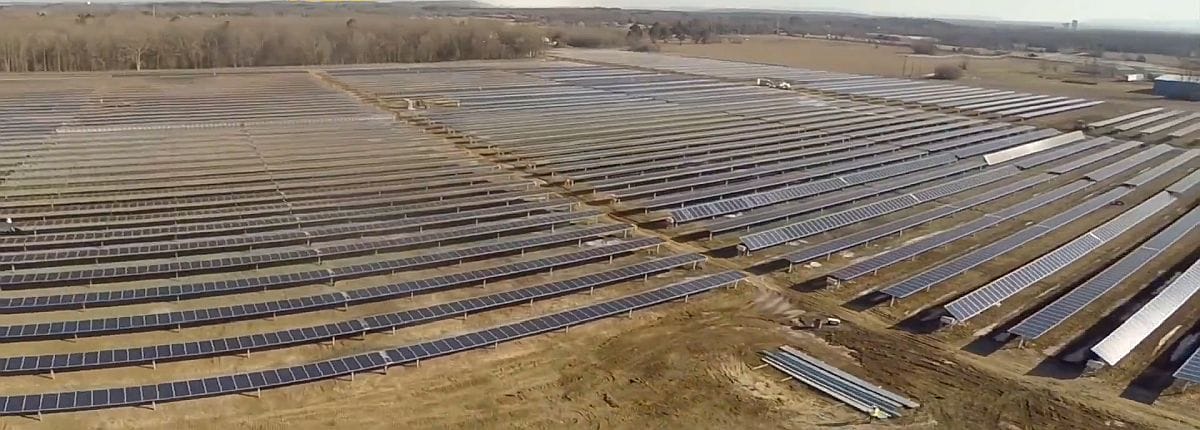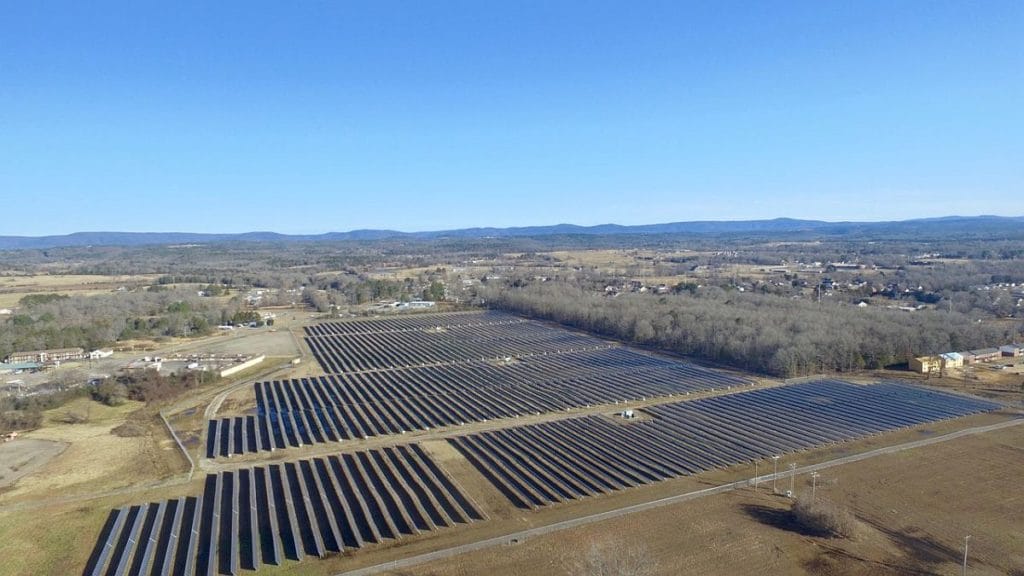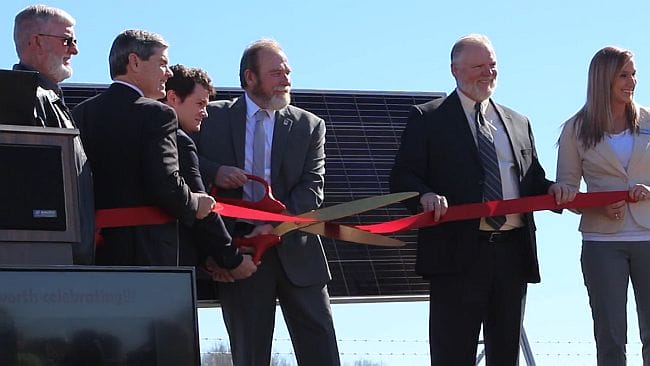

Uh oh...
It appears that you're using a severely outdated version of Safari on Windows. Many features won't work correctly, and functionality can't be guaranteed. Please try viewing this website in Edge, Mozilla, Chrome, or another modern browser. Sorry for any inconvenience this may have caused!
Read More about this safari issue.

In Arkansas, we take our state motto very seriously. The Natural State isn’t just a phrase to sport on a t-shirt or license plate. It’s a way many of us describe our lifestyle. We want to live more in tune with the environment, more aware of our carbon footprint. It’s not unusual for private citizens to have those goals, but in Clarksville, city officials took it to the next level by building the largest municipal solar power plant in the state.

When the Clarksville solar power plant project was announced in 2017, John Lester, general manager of Clarksville Connected Utilities (formerly Clarksville Light & Water Company) said the effort was “designed to position Clarksville as a town with the quality of life of a small town, but one that can think and do big things.”
Lester previously worked for the Missouri Public Utility Alliance, an organization involved in buying and selling power to municipalities, many of which had solar projects in place or in planning stages. He saw the benefits of solar and other sustainable power options being utilized in those communities. So when he came to Arkansas, he wondered if they would work for Clarksville. As he says, “I thought to myself, if the economics worked for them, it would probably work for Clarksville as well.” He and his team did the research and found out his assumptions were correct.

When a partnership with Scenic Hill Solar to build the first solar arrays was announced in 2017, it was estimated that the plant would save Clarksville energy customers approximately $500,000 each year. That expectation has been realized. The savings are projected to increase when Clarksville Connected Utilities (CCU) takes full ownership from Scenic Hill Solar in the future. The city has already negotiated a future purchase price.
But access to renewable energy sources doesn’t just provide citizens with a cheaper electric bill. It’s also a big selling point for the business community. In fact, expectations are that the city will see an increase of over $10 million in economic development while reducing carbon emissions by over 215,000 metric tons. That’s the equivalent of over 516 million fewer passenger car miles, 229 million pounds of coal not being burned, or the air-scrubbing capacity of 5.5 million trees.

January 2020 marks the second anniversary of the solar plant going online, and results have been exceeding expectations. The 42-acre plant has more than 20,000 solar modules and produce enough clean electricity to satisfy over 25% of Clarksville’s residential electricity consumption.
Since the initial plant was constructed, a smaller plant has been added to the grid in December 2019. It consists of 7,200 solar modules on 10 acres close to the CCU facility. With the addition of this plant, Clarksville is able to claim the title of the first city in the state that uses solar power exclusively to power all of its municipal buildings. As Lester says, “First is forever. It was a way to differentiate our community.” Power Plant I boasts a production capacity of 5.2 Megawatts and Power Plant II can produce 2.1 Megawatts, for a total output of 7.3 Megawatts.

So far, the response of Clarksville citizens to the projects has been very positive. While there has not been a dramatic change in anyone’s electric bill two years in, the savings will start to show up more clearly when CCU takes on full ownership of the plants. As Lester explains, “$500,000 in savings per year against an annual cost for power of $17 Million is a small percentage like 2%.” But the decision to build the plants was made to bring about long-term change.
Clarksville is also adding broadband to its efforts to create an environment that will appeal to businesses and individuals looking for a place to build a future in Arkansas. It sounds like they are headed in the right direction. Naturally.
We do the work.
You check your email.
Sign up for our weekly e-news.
Get stories sent straight to your inbox!









Like this story? Read more from Laurie Marshall
Many Arkansans know the name Miller Williams, the Arkansas-born poet who...
After July 4, we don’t have anything official to celebrate until Labor...
When I was a girl, my grandmother took me to visit the Ozark Native Craft...
Join the Conversation
Leave a Comment